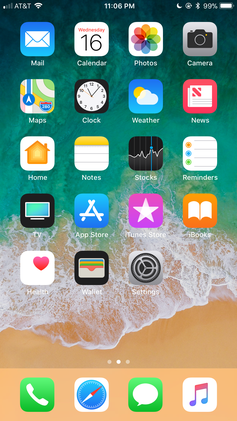IOS 11
| A version of the iOS operating system | |
 |
|

The default home screen of iOS 11 developer beta on an iPhone 7 Plus.
|
|
| Developer | Apple Inc. |
|---|---|
| Source model | Closed with open-source components |
| Latest preview | 11.0 beta 4 (15A5327g)(July 24, 2017) |
| Platforms | |
| Kernel type | Hybrid (XNU) |
| License | Proprietary software with open-source components |
| Preceded by | iOS 10 |
| Official website | www |
| Support status | |
| Preview | |
iPod Touch
iPad
iOS 11 is the eleventh major release of the iOS mobile operating system developed by Apple Inc., being the successor to iOS 10. It was announced at the company's Worldwide Developers Conference on June 5, 2017. The first beta version was released for developers after the keynote presentation, with a public beta released in late June, and a stable version for consumers scheduled for the third quarter of 2017.
Among iOS 11's changes, the lock screen and Notification Center are combined, allowing all notifications to be displayed directly on the lock screen. The various pages of the Control Center are unified, gaining custom settings and the ability to 3D Touch icons for more options. The App Store receives a visual overhaul to focus on editorial content and daily highlights. A "Files" file manager app allows direct access to files stored locally and in cloud services. Siri will be able to translate between languages, will feature more human voices, and use a privacy-minded "on-device learning" technique to better understand a user's interests and offer improved suggestions. The camera will feature new settings for improved portrait mode photos and will use new encoding technologies to reduce file sizes. Messages will be integrated with iCloud to better synchronize messages across iOS and macOS devices, and will support person-to-person Apple Pay payments. The operating system will also introduce the ability to record the screen. Certain new features will appear only on iPad, including an always-accessible application dock and a new interface to show multiple apps at once. iPhone and iPad users can drag-and-drop files, though the feature is more limited on iPhone.
...
Wikipedia
